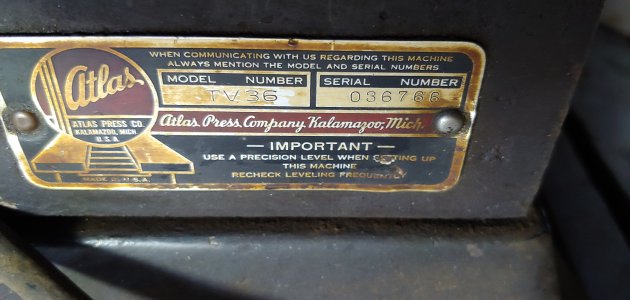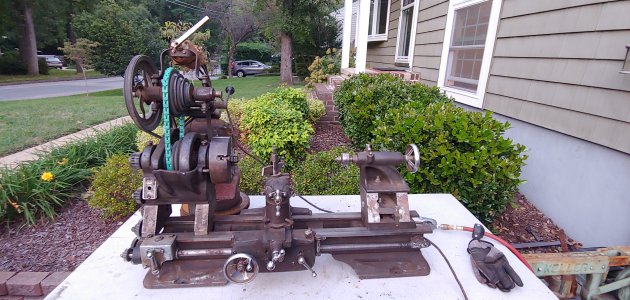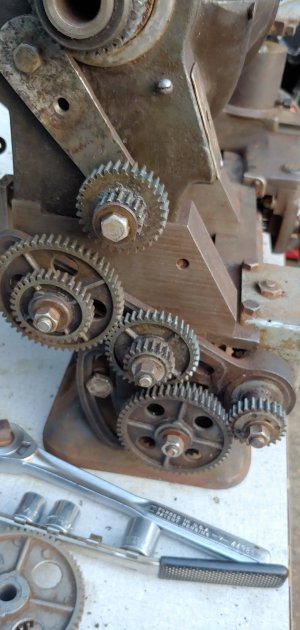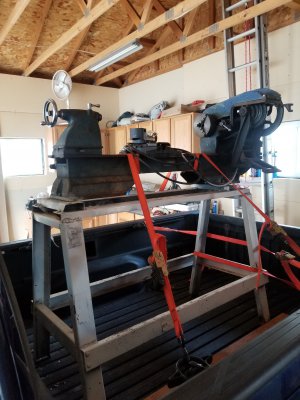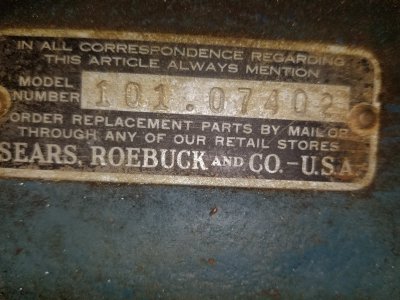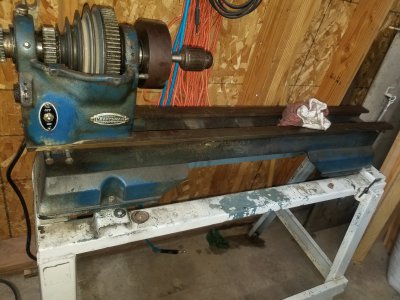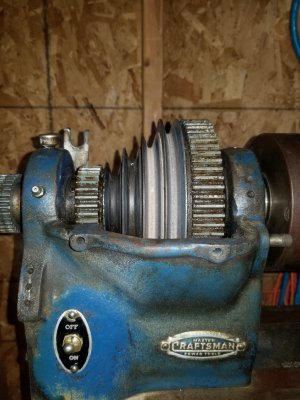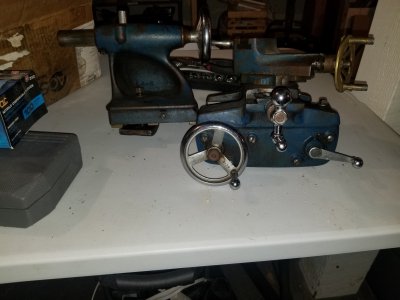- Joined
- Dec 25, 2011
- Messages
- 10,511
Sorry for the delay in replying. I have been trying to come up with a believable explanation for why the serial number does not jive with the model number. If you refer to the parts manuals in Downloads (or to the poorer copies on Vintage Machinery since access to Downloads requires Donor status), you will find that the nearest model number that almost matches the machine in the photographs is 101.28990. This is actually the one that you want as most of what Sears sold was described as less motor. I am 99% sure that 101.28991 means a 101.28990 that came with the motor. Which explains that. Unfortunately, out of 824 total entries in the Atlas Machines database, the only other 101.28991 that we have listed is one of the 70 or so carry-overs from back when I originally reorganized the database on Yahoo about a decade ago. However, ...
The 1/2" bed 12" swing lathes that replaced the Atlas 10" and Craftsman 12" lathes with 3/8" beds in mid 1957 appear to have had serial numbers starting over at '1'. The new Craftsman badged and Atlas badged machines were the same except for the names on the badges, plates or decals. And AFAIK, they each had there own serial number block. So there should if we had enough entries been some cases where the Atlas and the Craftsman machines had the same serial number. Unfortunately, aside from some cases where for example a mill and a lathe had the same serial numbers, we don't have any entries where the serial numbers of two lathes are the same except for one case where a 10" QC lathe was originally entered by one member who later sold it to another member so it technically got entered twice. But we don't have any cases where two lathes with different model numbers have the same serial number. So my conclusion about the serial numbers blocks remains an assumption.
The Atlas and the Craftsman 1/2" bed 12" machines were made from mid-1957 until mid 1966 (I think). The cabinet model 12x36 looked pretty much like the final version 12" except that it had the same right lead screw bearing, lead screw and rotating knob to pull out to engage power cross feed as was used on the 10" and earlier 12". And the QCGB or the change gears were almost the same as on the early 12" except that there were minor differences in how the QCGB mounted to the bed and headstock. So some part numbers are different.
In mid-1966, the final versions of the 12" were introduced. And the first serial number for both Atlas and Craftsman was apparently 100001. The right lead screw bearing was changed to a 2-piece steel assembly that was definitely not frangible and needle thrust bearings were added. The lead screw was shortened slightly, the QCGB output shaft was lengthened slightly, the 5/8" hole eliminated and the OD reduced to 3/4" and, a 1.0 lb-ft slip clutch was added. The knob on the end of the power cross feed shaft was replaced by a lever assembly. And one QCGB mounting screw and holes for it was added inside the headstock.
However, assuming that your father did not convert an early 1/2" bed model to a late version (and the model number indicates that he didn't), the machine was made in late 1966 or early 1967. And got a wrong serial number.
The 1/2" bed 12" swing lathes that replaced the Atlas 10" and Craftsman 12" lathes with 3/8" beds in mid 1957 appear to have had serial numbers starting over at '1'. The new Craftsman badged and Atlas badged machines were the same except for the names on the badges, plates or decals. And AFAIK, they each had there own serial number block. So there should if we had enough entries been some cases where the Atlas and the Craftsman machines had the same serial number. Unfortunately, aside from some cases where for example a mill and a lathe had the same serial numbers, we don't have any entries where the serial numbers of two lathes are the same except for one case where a 10" QC lathe was originally entered by one member who later sold it to another member so it technically got entered twice. But we don't have any cases where two lathes with different model numbers have the same serial number. So my conclusion about the serial numbers blocks remains an assumption.
The Atlas and the Craftsman 1/2" bed 12" machines were made from mid-1957 until mid 1966 (I think). The cabinet model 12x36 looked pretty much like the final version 12" except that it had the same right lead screw bearing, lead screw and rotating knob to pull out to engage power cross feed as was used on the 10" and earlier 12". And the QCGB or the change gears were almost the same as on the early 12" except that there were minor differences in how the QCGB mounted to the bed and headstock. So some part numbers are different.
In mid-1966, the final versions of the 12" were introduced. And the first serial number for both Atlas and Craftsman was apparently 100001. The right lead screw bearing was changed to a 2-piece steel assembly that was definitely not frangible and needle thrust bearings were added. The lead screw was shortened slightly, the QCGB output shaft was lengthened slightly, the 5/8" hole eliminated and the OD reduced to 3/4" and, a 1.0 lb-ft slip clutch was added. The knob on the end of the power cross feed shaft was replaced by a lever assembly. And one QCGB mounting screw and holes for it was added inside the headstock.
However, assuming that your father did not convert an early 1/2" bed model to a late version (and the model number indicates that he didn't), the machine was made in late 1966 or early 1967. And got a wrong serial number.


